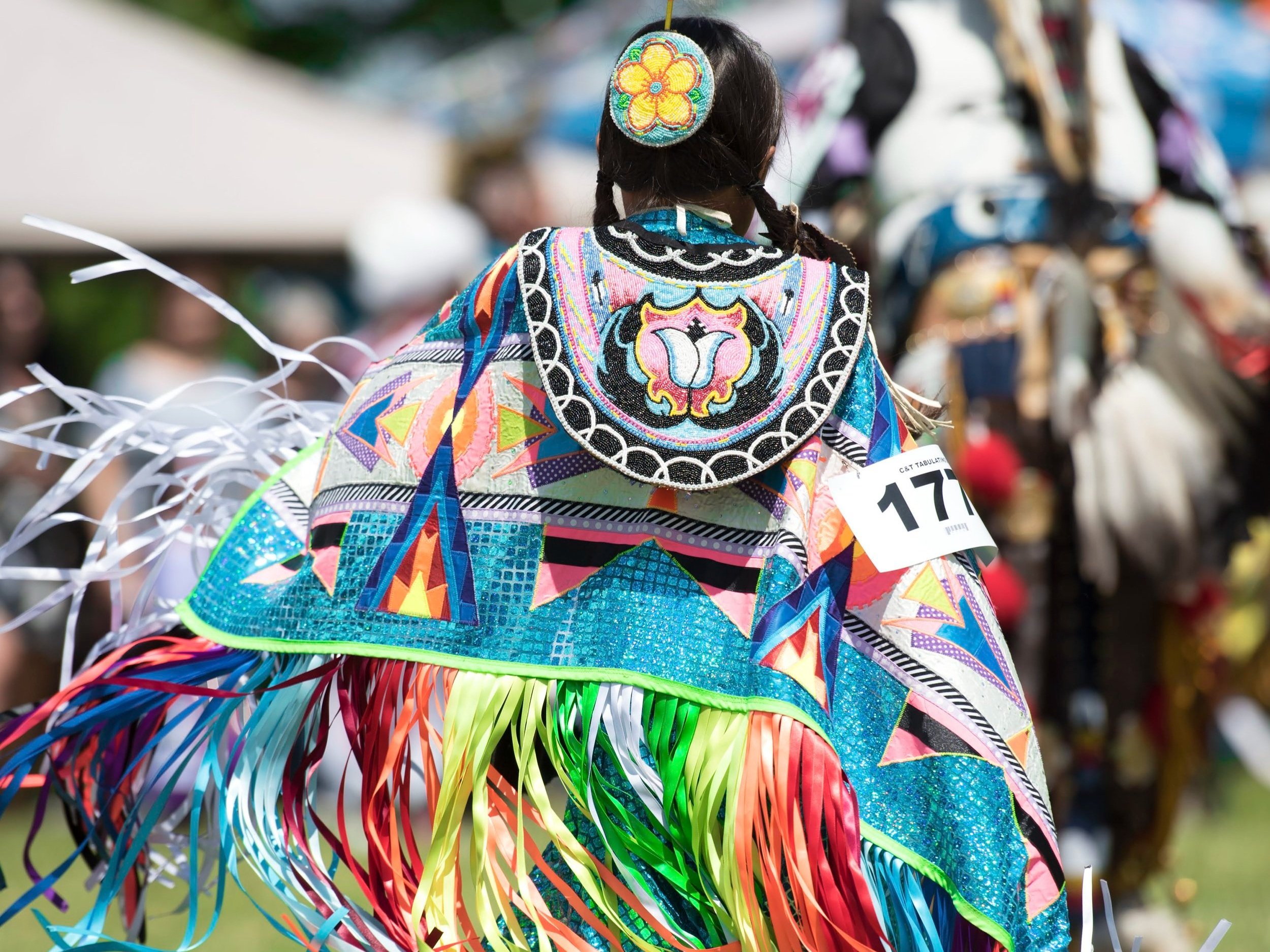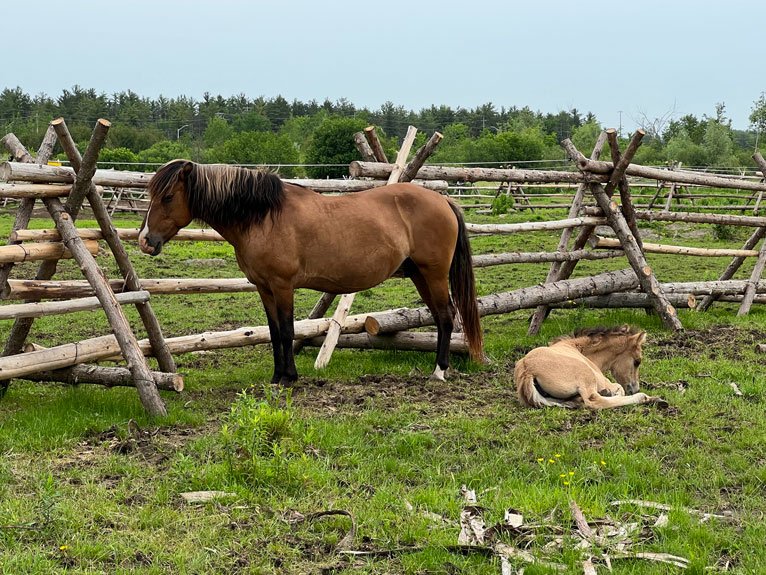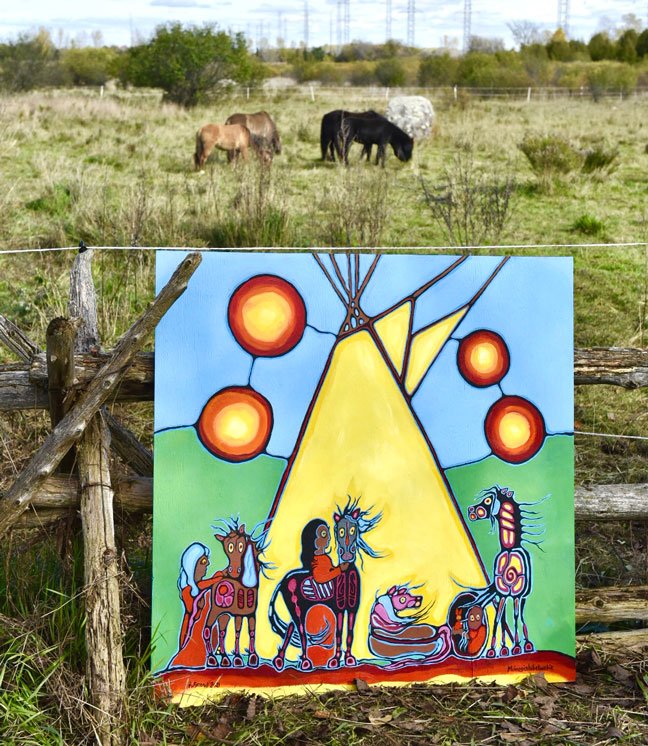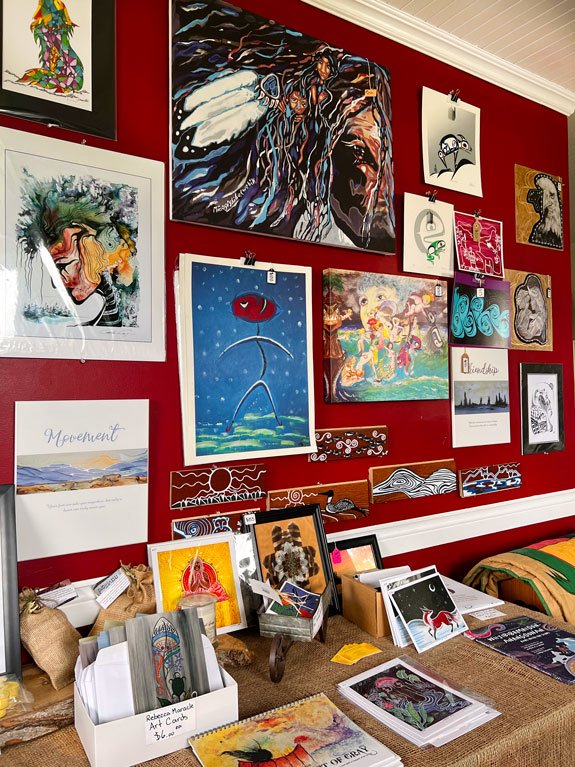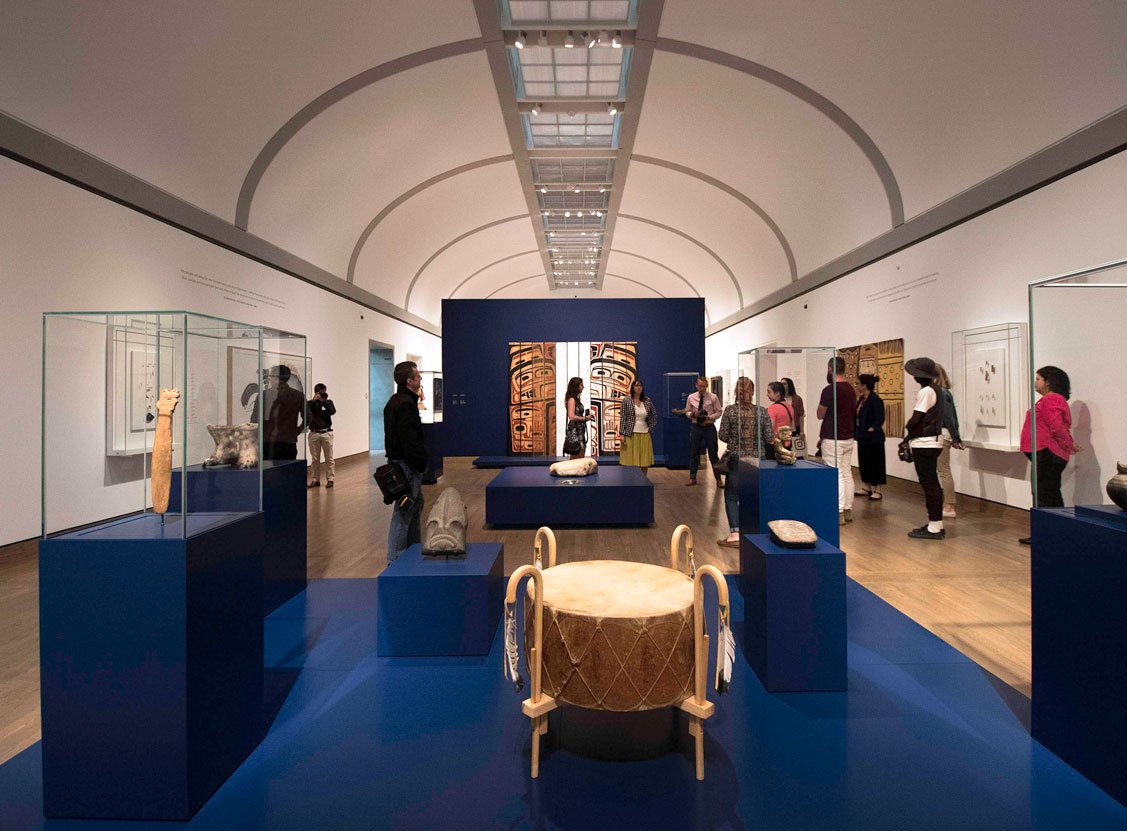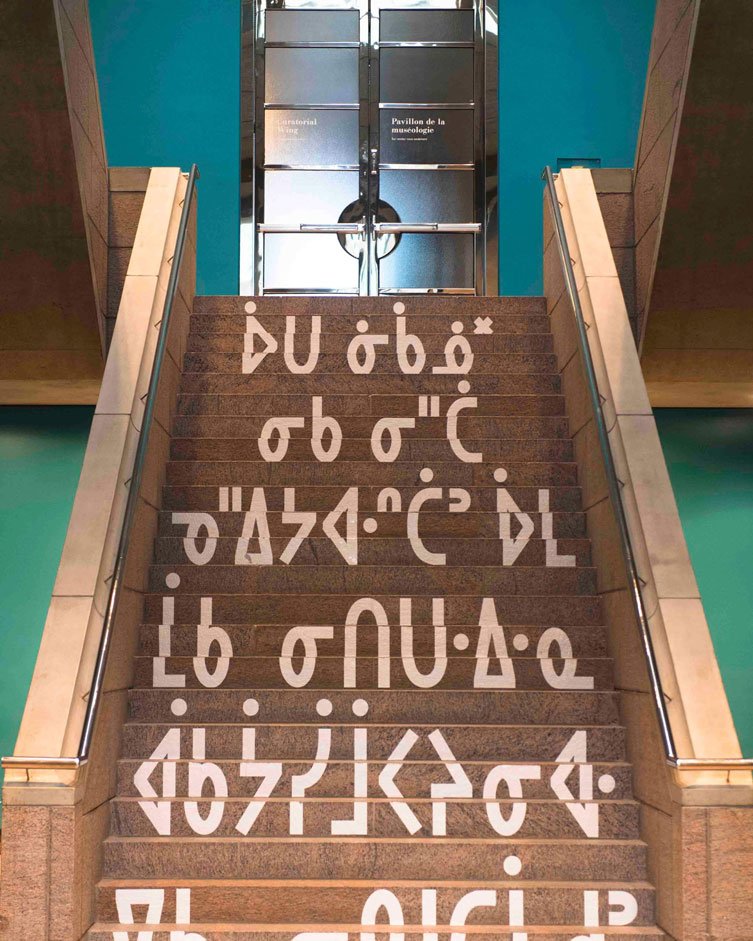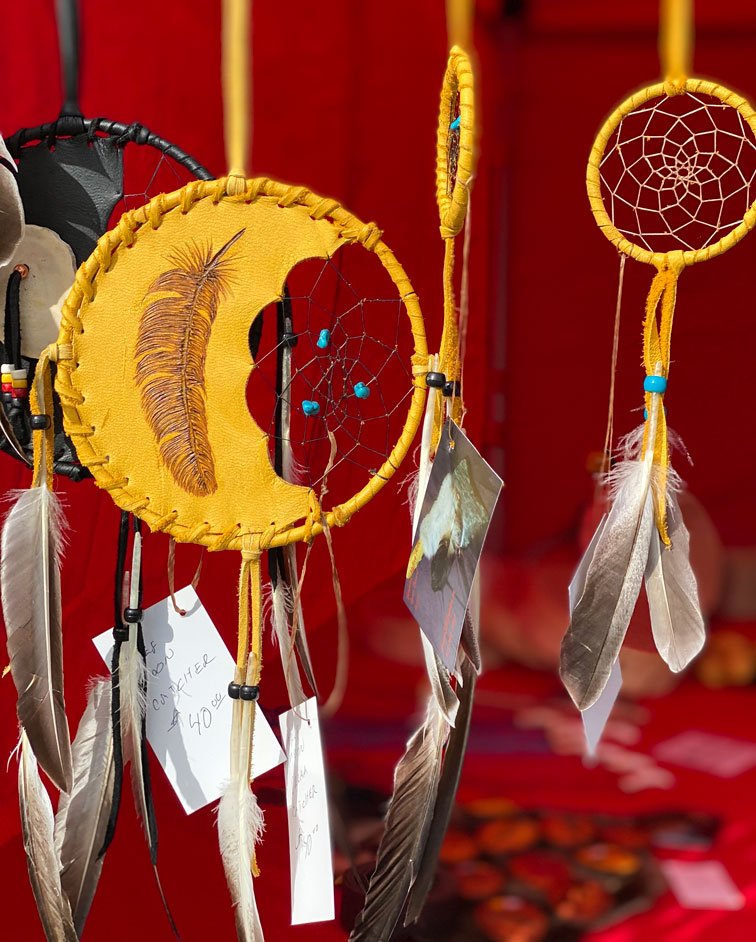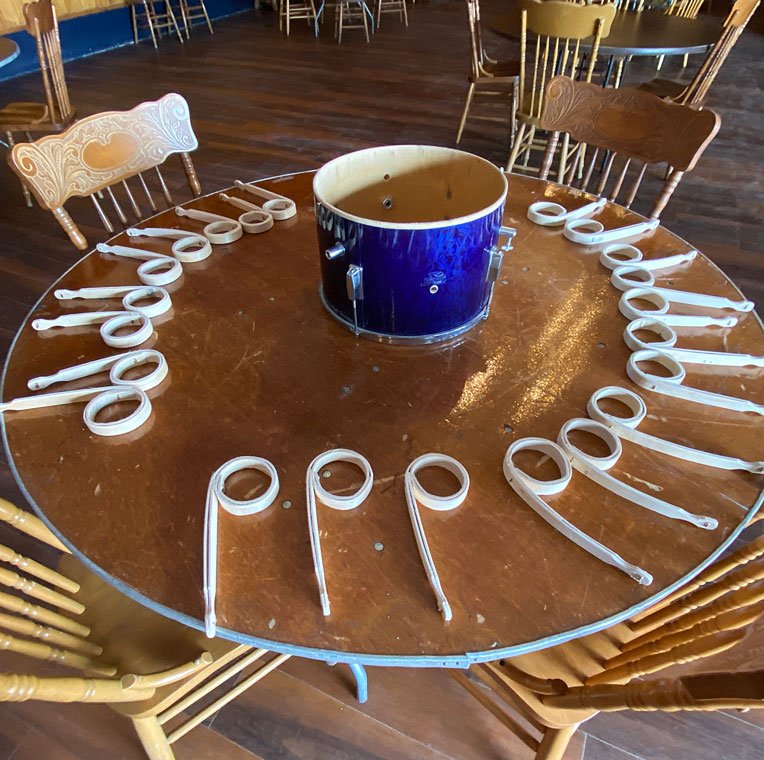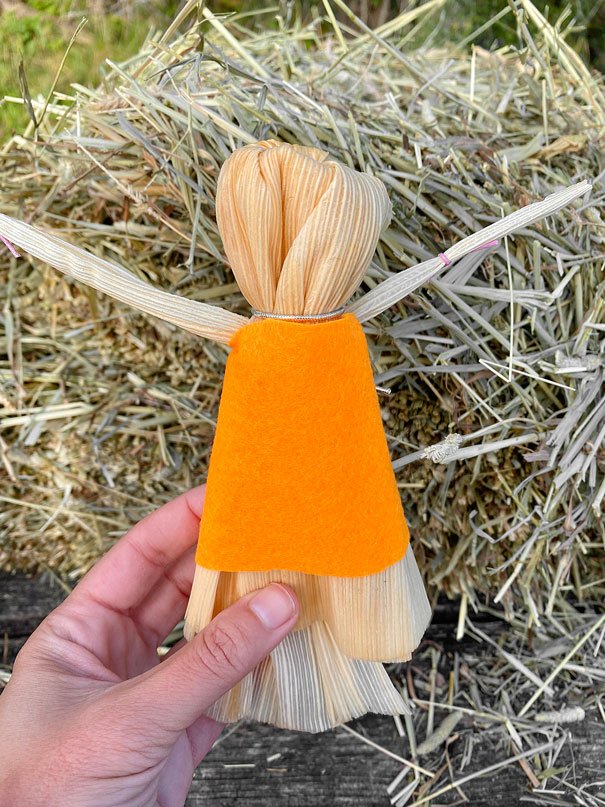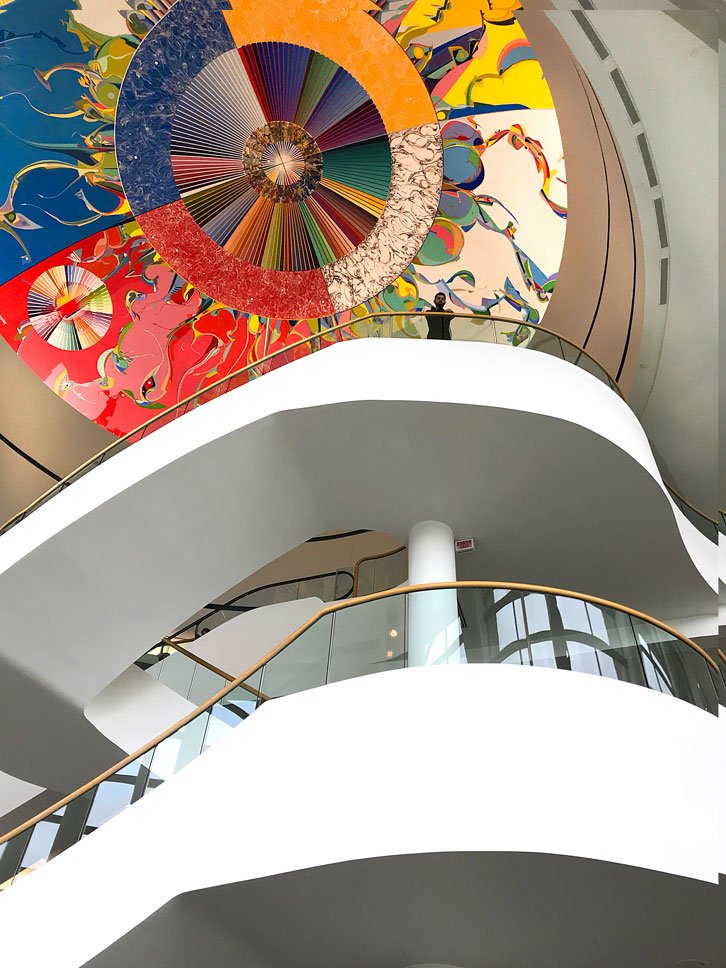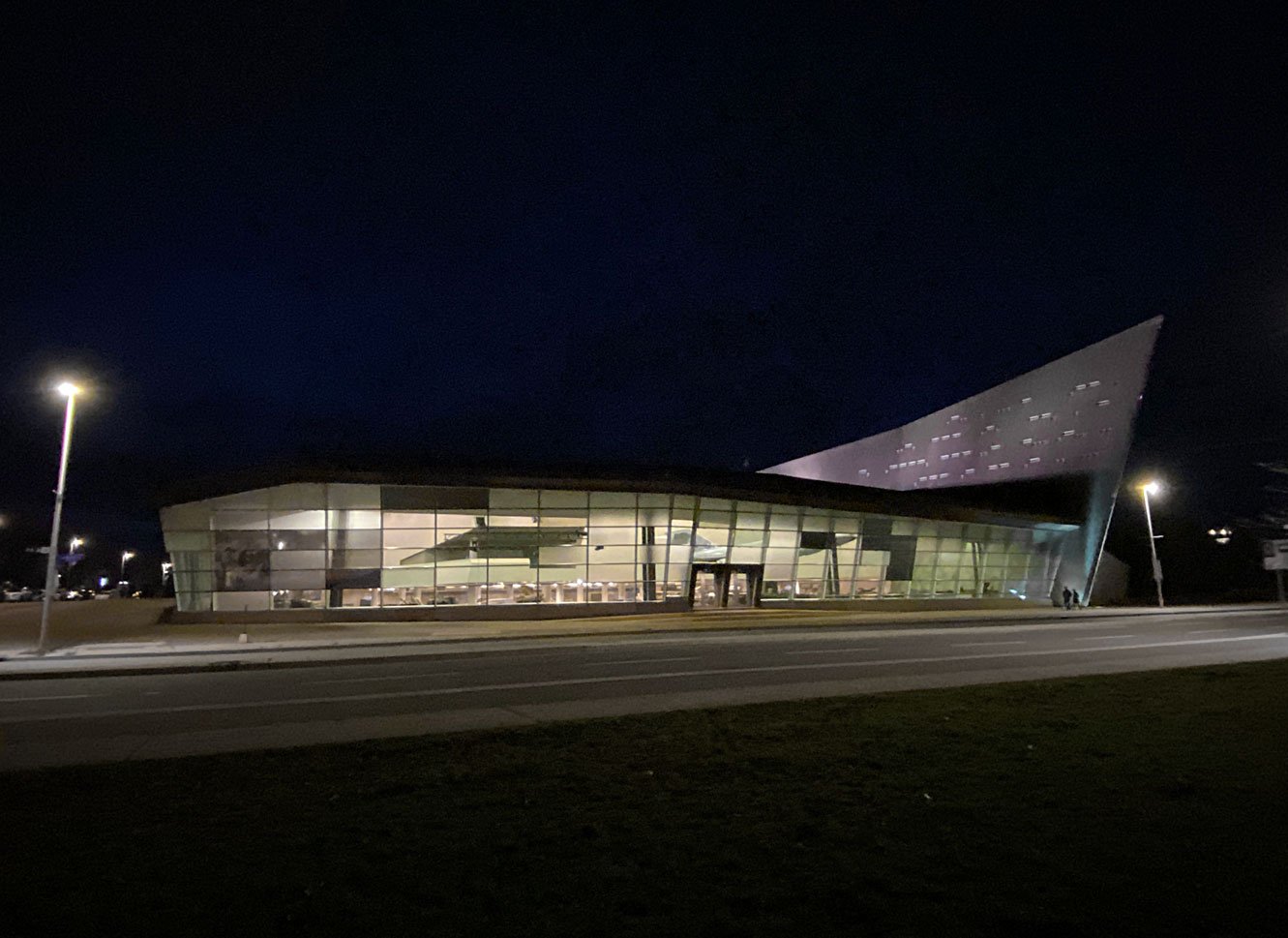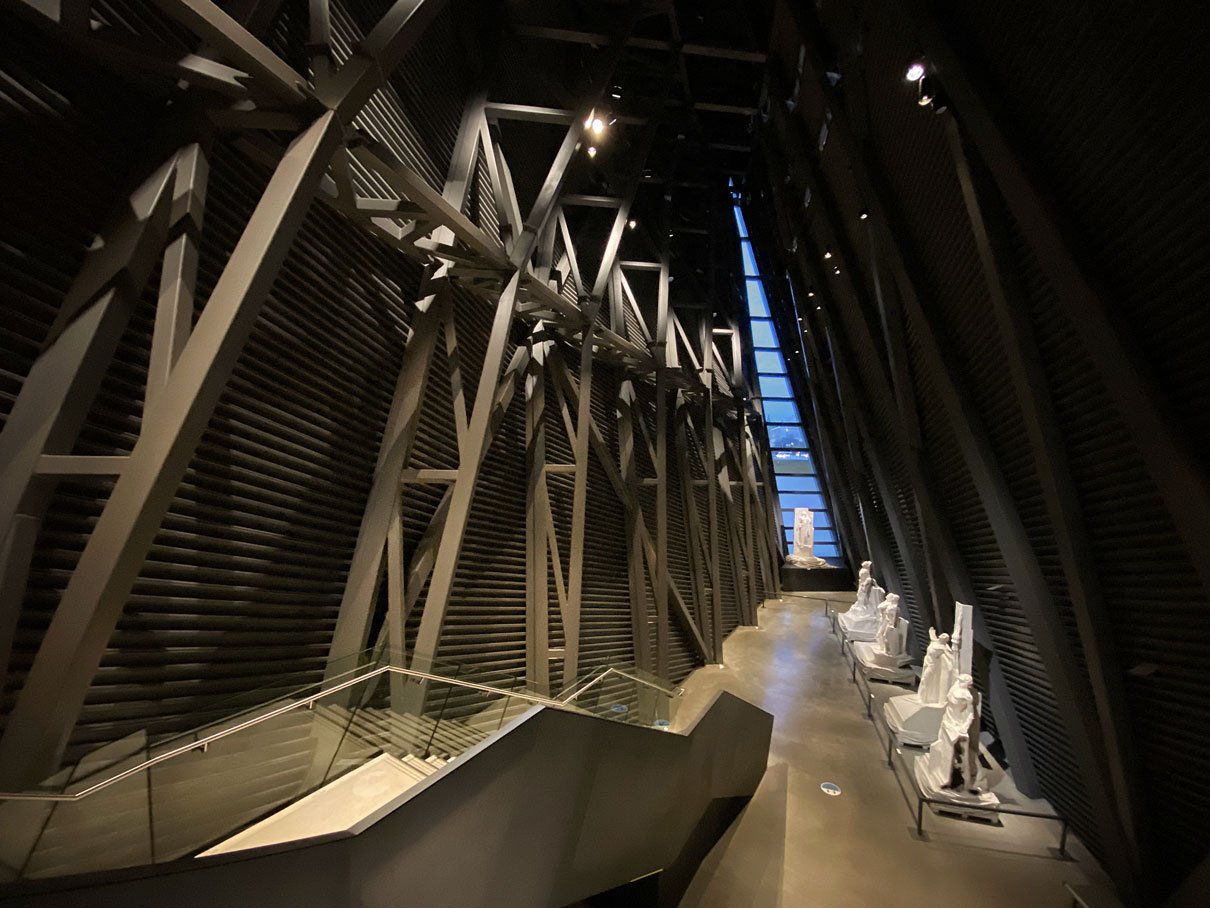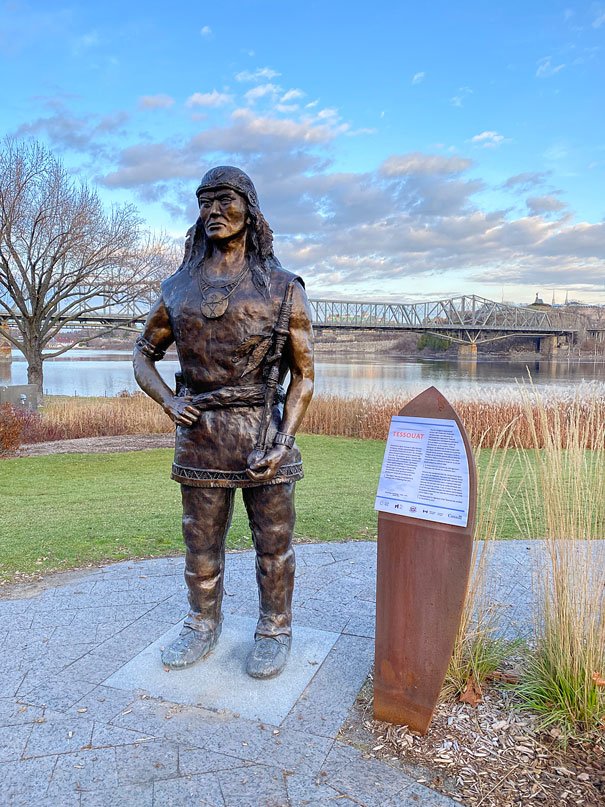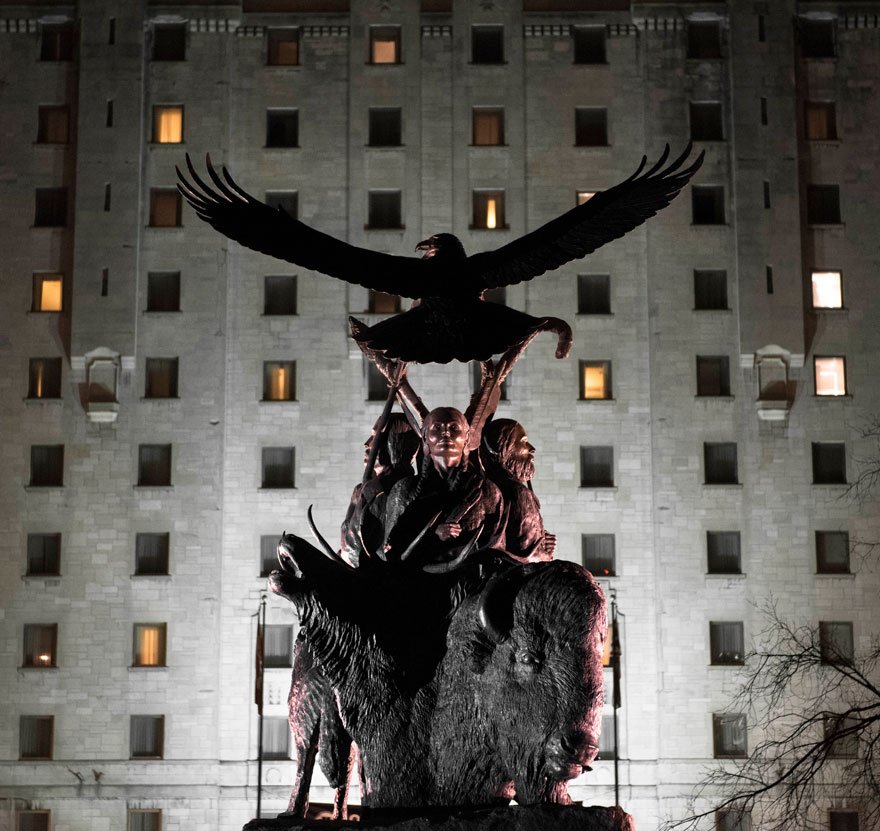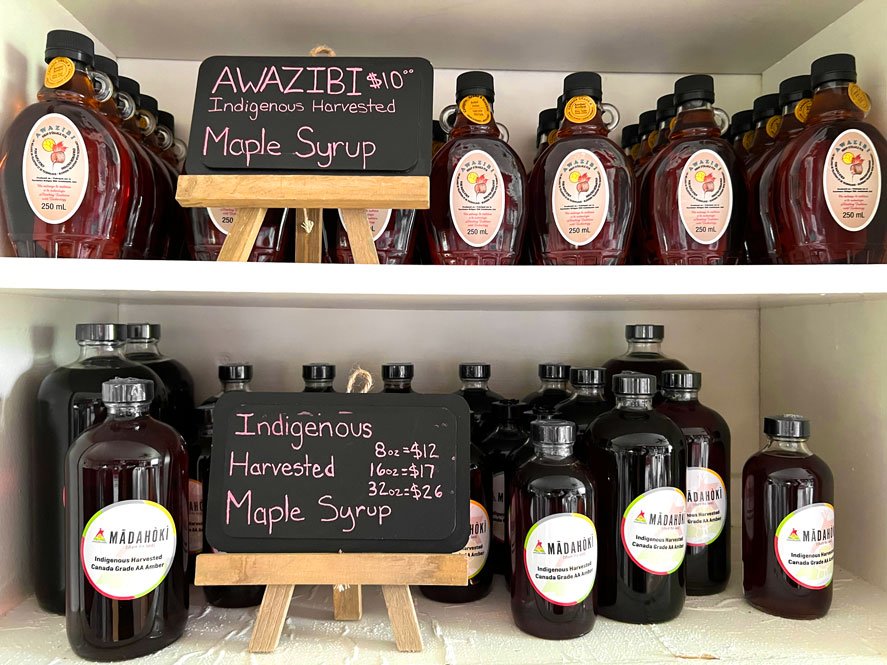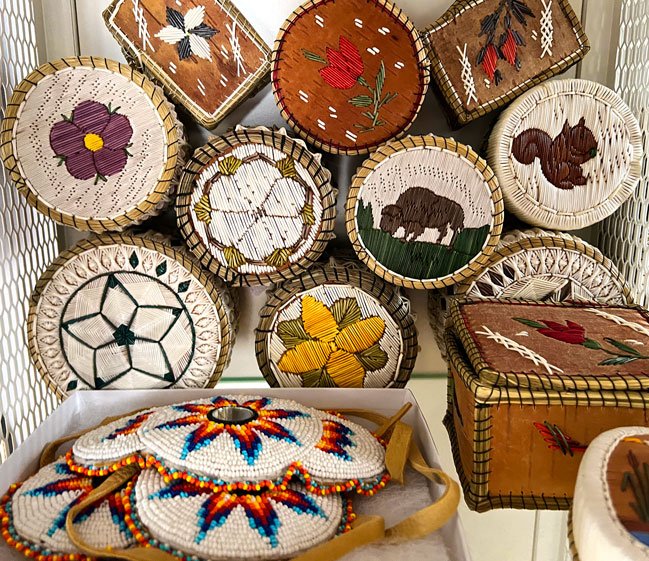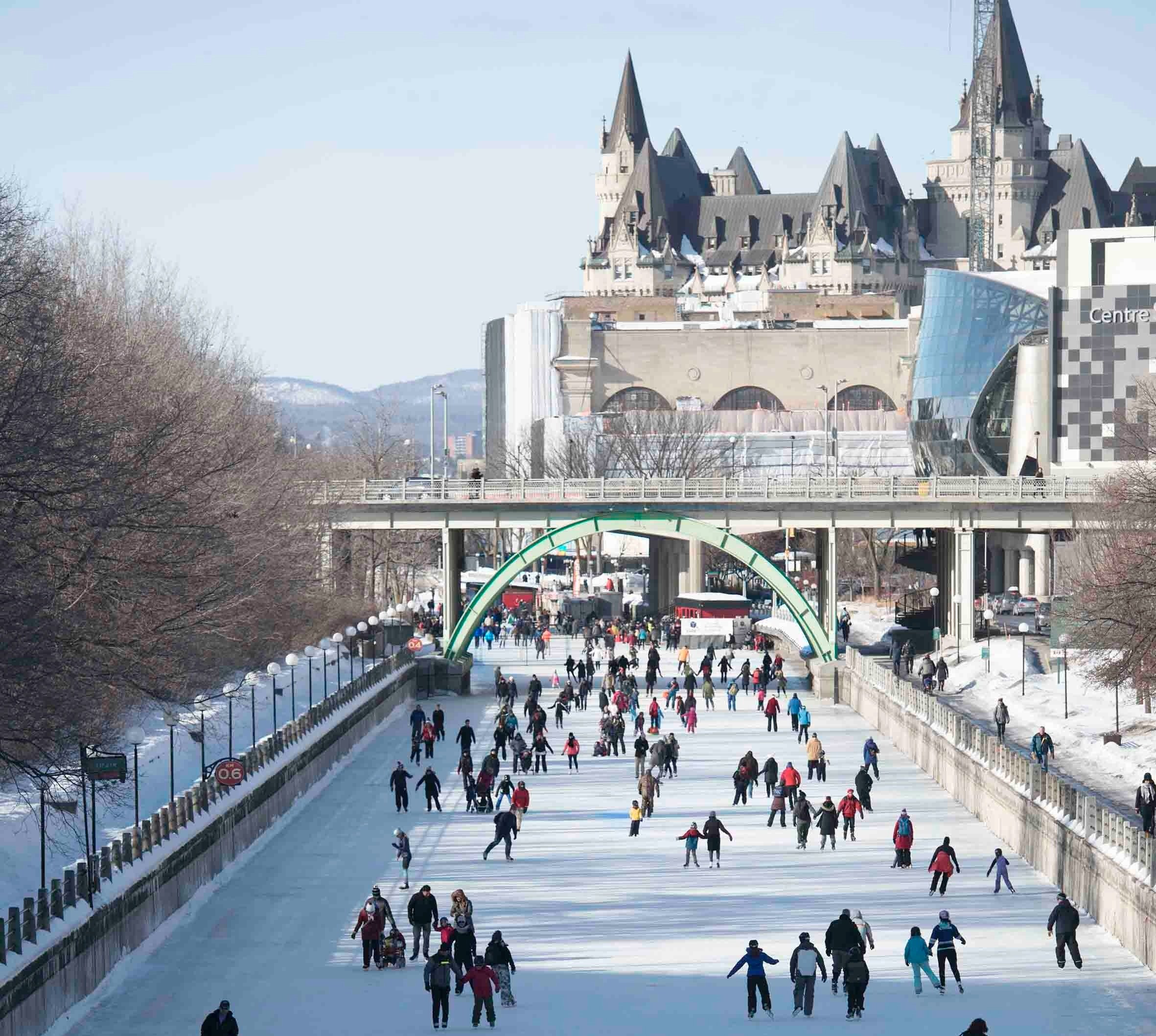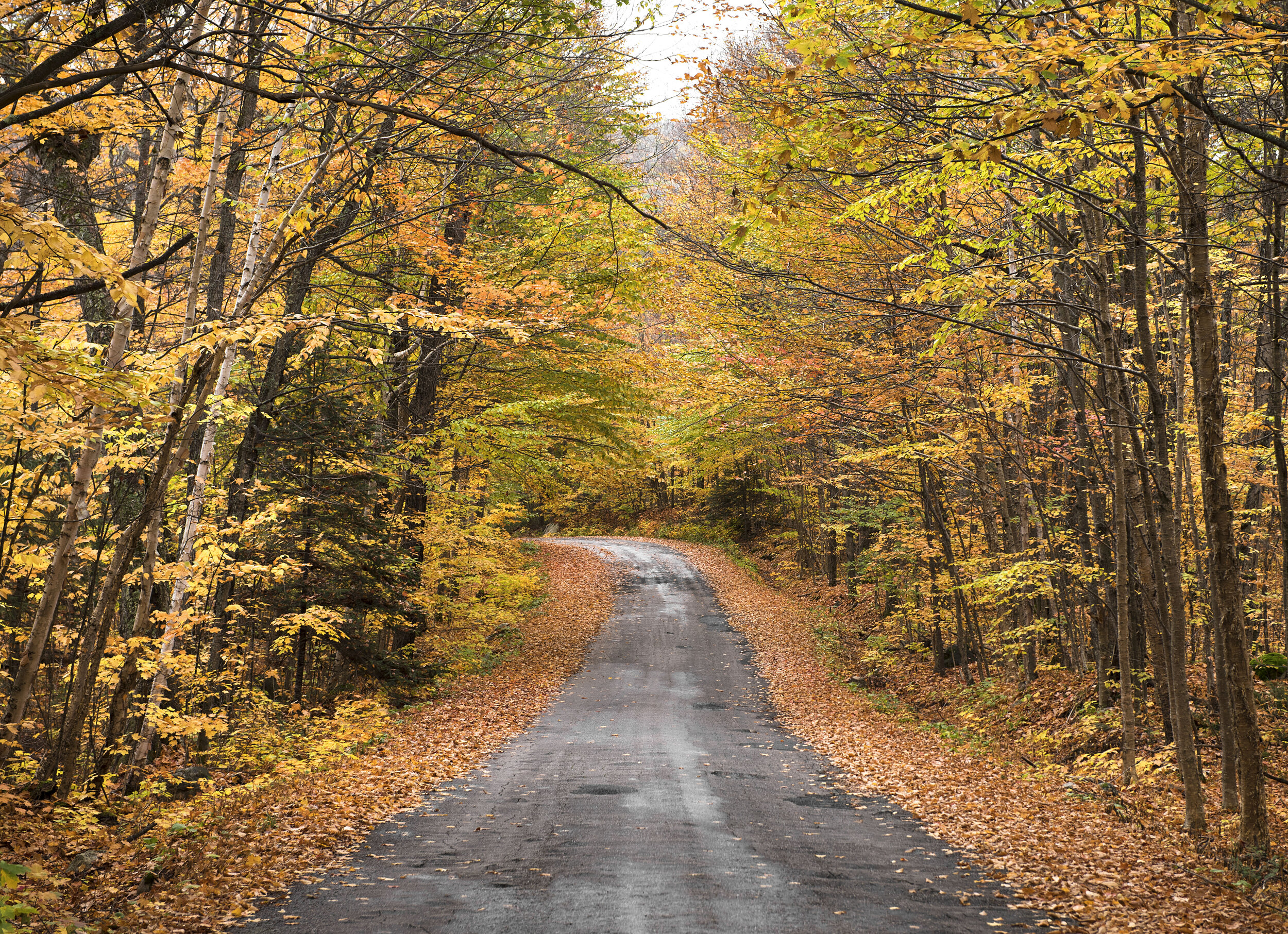The Best Ways to Experience Indigenous Culture in Ottawa
The lives of all Canadians are rooted in the rich Indigenous history that resides deep within the land on which they live, work and play. Ottawa, which sits on the traditional and unceded territories of the Algonquin peoples and their descendants, has many opportunities for residents and visitors to learn about, experience, appreciate and support Canadian Indigenous culture. From Indigenous art and important historical monuments around the city, to traditional pow-wows and unique Indigenous-owned businesses, there are many ways to enrich your experience in the nation's capital through Indigenous culture.
Mādahòkì Farm
In October of 2021, Indigenous Experiences created a new tourism experience in Ottawa, building on the increased interest in authentic Indigenous cultural experiences. Located on the traditional and unceded territories of the Algonquin peoples and their descendants, Mādahòkì Farm hosts a series of Indigenous events celebrating each season; Sīgwan (Spring), Tagwàgi (Autumn) and Pibòn (Winter) as well as the annual Summer Solstice Indigenous Festival. The events bring together food, dance, arts and storytelling, and are a great way to support the local Indigenous community and learn more about their history and culture.
Mādahòkì Farm is also the permanent home for five rare and endangered Ojibwe Spirit Horses. The horses were almost driven to extinction in the early 1970’s, when most of them were rounded up and sold off, destined for the slaughterhouse. These small horses were native to Canada long before the mustang descended from Spanish horses. Mādahòkì Farm is now home to several of these beautiful creatures, including some new additions over the years. As an Ojibwe Horse Knowledge Keeper and recipient of a Lifetime Achievement Award from Rare Breeds Canada for her work in preserving the Ojibwe Horse breed, Métis visual artist Rhonda Snow has several captivating and colourful art pieces available for purchase in the Mādahòkì Farm Indigenous Marketplace. Her rich Woodlands style canvases, art cards and prints are truly captivating, and incorporate the knowledge she has gained over the years from the Elders about the “small horses of the big woods.”
Mādahòkì Farm’s year-round Indigenous Marketplace is a unique place that promotes products made by Indigenous artisans from the Ottawa area, and is a great spot to pick up Indigenous-made items to support businesses in the region. Browse the beautiful selection of quill boxes, dream catchers, stunning paintings, sweetgrass candles, cedar soaps, maple syrup, traditional medicine, jewelry, accessories and home décor. If you can’t make it to the farm, many items can be purchased online, all year long.
National Gallery of Canada
With an extensive Collection of First Nations, Métis, and Inuit artworks, the permanent Indigenous and Canadian Galleries at the National Gallery of Canada is the largest display of such art in the gallery’s history. The emphasis is on contemporary art from 1980 to the present day, and the galleries are a great place to admire art from different Indigenous cultures around the country. There is also additional Inuit art on display in the museum’s Inuit gallery, from paintings depicting daily life, to intricately carved animal sculptures. With hundreds of pieces of Indigenous art in the gallery’s collection, visitors and art afficionados can view works by some of the best-known Indigenous artists in Canada, including Carl Beam, Brian Jungen, Faye HeavyShield, Jeffrey Thomas, Shelley Niro, and Lawrence Paul Yuxweluptun. There are also many special rotating exhibitions and installations throughout the gallery featuring spectacular Indigenous art, so be sure to check what’s on before your visit.
If you’re looking to take home some inspiration before you leave, be sure to stop by the National Gallery’s boutique. You’ll find beautiful indigenous art books, prints, postcards, notecards and stunning jewelry by Indigenous artist Corrine Hunt.
The Summer Solstice Indigenous Festival
Established in Ottawa in 1996, the Solstice Indigenous Festival is a multi-disciplinary arts festival that brings together Indigenous artists, performers, educators, students, and members of the community to share knowledge and celebrate Canada’s diverse Indigenous cultures. The festival aims to help all Canadians recognize the enormous contributions that Inuit, First Nations and Métis peoples have made to Canada. The festival runs for one week each June to coincide with Indigenous People's Day on June 21st, with the main events including the competition pow-wow taking place over the final weekend at the beautiful grounds of Mādahòkì Farm. There are education days for student and school groups, an expanded Indigenous marketplace with artisans from around the region, traditional music, storytelling and dance performances, as well as the competition pow-wow, which is open to the public.
The festival provides many opportunities to learn hands-on skills from Indigenous artists, including various workshops led by expert instructors. Try your hand at Metis floral painting, traditional hand drum making, beading and wooden paddle painting.
For those who love food, the Solstice Festival provides a great opportunity to learn about (and sample of course!), traditional dishes like bannock, cedar tea, Indian tacos and bison stew. For avid foodies or those looking for a unique culinary experience, join a traditional long table dinner with inventive Indigenous dishes prepared by top Indigenous chefs from the region. The menu changes each year but you can expect delicacies like Curried Caribou, Venison Ragout, Seared Rainbow Trout with Sweet Corn Succotash, Seared Venison Frenched Rack with Sweetgrass sauce and homemade fish tacos.
A powerful event which closes the festival each year, the competition pow-wow is not to be missed. Watch as participants from around the region participate in various competitions in colourful traditional regalia, and connect with the spirit of Canadian Indigenous culture. It’s a moving and educational experience and one of our favourite events in Ottawa each year.
Canadian Museum of History
To fully appreciate the history of Canada, we need to fully understand and recognize the role of Indigenous peoples in Canada. As the most visited museum in Canada, the Canadian Museum of History provides an in depth look into Indigenous history.
Marvel at the largest indoor collection of totem poles in the world, celebrating the First Peoples of Canada’s Pacific Coast, in the museum’s majestic Grand Hall. Enjoy the amazing view of Parliament Hill and the Ottawa River through the Grand Hall’s impressive six-storey windows, and don’t forget to look up at the domed ceiling for the stunning painting, Morning Star, by Indigenous artist Alex Janvier. As one of Canada’s great Indigenous artists, Janvier was a member of what was called the Professional Native Indian Artists Incorporation, commonly referred to as the “Indian Group of Seven”. Located outside the Grand Hall (near the lower pond) you’ll also find a unique art installation from internationally acclaimed ‘Namgis First Nation artist, Mary Anne Barkhouse. Admire the stunning life-size bronze wolf in a copper canoe titled “namaxsala”, which means “to travel by boat together”. This beautiful piece is inspired by a story that the artist learned from her grandfather, who helped a wolf cross a treacherous stretch of water in a boat, and is definitely worth a stop.
Next head to the First People’s Hall, which presents an extensive collection of exhibits celebrating the history, diversity and resourcefulness of First Nations, Indigenous and Inuit peoples of Canada. This educational space with more than 2,000 historical artifacts, images and documents, illustrates the traditional cultures of Indigenous peoples across the country, and how European contact and settlement affected their culture and way of life.
As the largest exhibition about Canada’s past ever created, the Canada History Hall tells the story of 15,000 years of Canadian history. Opened in 2017, the Canada History Hall has over 1,500 artifacts in an open and interactive space, with Indigenous history incorporated throughout.
Canadian War Museum
Understanding the role of Canada’s First Peoples in Canada’s military history is vital, and can be explored at the Canadian War Museum. There are several sections in the museum which concentrate on conflicts involving Canada’s First People, both before and after European contact. The Early War in Canada – Canadian Experience gallery is also a must-visit space. Learn about Indigenous warfare, the history of the Northwest Resistance of 1885, Métis spiritual leader Louis Riel, and how the wars of the First Peoples shaped the country.
Each Remembrance Day (November 11) and on the National Day for Truth and Reconciliation (September 30), the Canadian War Museum presents special programming, providing an enhanced experience through an Indigenous lens. Admission is free on both days, making it the perfect time to visit, and expand your views and knowledge about Indigenous history.
Odawa Pow Wow
Each year at the end of May the Odawa Native Friendship Centre hosts the annual Odawa pow-wow. Located in Ottawa’s west end, the pow-wow features an Indigenous dance and singing competition, traditional drumming, family events and children’s pow-wow, as well as an arts and crafts market, and the opportunity to sample Indigenous cuisine. The pow-wow has been running annually for over 28 years and is a time for people to gather, celebrate Mother Nature, form and renew friendships, and learn. The Odawa pow-wow is open to the public, and everyone is welcome.
Canadian Museum of Nature
The natural world plays a pivotal role in Indigenous communities across the country, and is at the core of the Canadian Museum of Nature. In consultation with Indigenous groups from around the region, and with Inuit communities, the Northern Voices Gallery (located in the Canada Goose Arctic Gallery), presents rotating exhibitions exploring Indigenous culture and Canada’s North. The special temporary exhibitions in this space are curated by Northern communities, providing them with the opportunity to share their perspectives about the Arctic and their relationship with the land.
Take a snapshot of the stunning giant mural designed by Inuk artist Nancy Saunders, and learn more about life in Canada’s Northern communities. One exhibit you won’t want to miss is Beyond Ice, an interactive ice installation created in collaboration with the National Film Board of Canada. Watch projections of Inuit art onto real blocks of ice, then touch the blocks with your own hands and leave your unique imprint.
Indigenous Monuments and Important Sites in Ottawa
Ottawa is home to many significant Indigenous monuments, cementing the importance of Indigenous culture in Canada. Below are some key spots to visit while in the capital:
National Aboriginal Veterans Monument
Located in Confederation Park in downtown Ottawa, the National Aboriginal Veterans Monument honours the contributions of Canada’s Indigenous peoples in war and peacekeeping missions throughout the world. With more than 7,000 members of First Nations serving in the First and Second World Wars and the Korean war, this monument is a tribute to their sacrifices for Canada.
Vallants Memorial
In the heart of downtown Ottawa, adjacent to the National War Memorial, is the important Valiants Memorial. This monument pays tribute to several prominent Canadians, including well-known Mohawk warrior and principal war chief of the Six Nations, Thayendanegea (also know as Joseph Brant). During the American Revolution of 1775-1783, Brant led his people in support of the British and eventually brought them to Canada, where they settled in what is now Brantford, ON.
Pindigen Park
Pindigen Park, located steps away from the Canadian War Museum, is a meaningful place that highlights Indigenous culture and heritage, and celebrates the harmony between people, land, water and earth. Created in collaboration with the National Capital Commission and the local Anishinaabe communities of Kitigan Zibi Anishinabeg and the Algonquins of Pikwakanagan, the park’s name ’Pindigen’’ means: “Come on in! All are welcome here!”. Explore the park, which was designed as a romantic gardenesque-style green space, and learn more from the interpretive panels presented in three languages (Algonquin, English and French). Before you leave don’t miss the beautiful illustrations and steel sculpture silhouettes of Canadian animals all through the grounds.
Chaudière Falls
Nearly 60 m wide with a 15 m drop in elevation, Chaudière Falls is considered a sacred site for First Nations people, who have lived along the Ottawa River for millennia. The Falls were used as a meeting place, portage site and important trade route in the region. The cauldron-shaped cascades inspired the Algonquin First Nation to name the falls “Asicou”, translated to “kettle” or “boiler”. Visitors today can enjoy the falls from Chaudière Falls Park, with a series of viewing platforms and a new accessible bridge across the intake channel. With several benches to relax on, it is also the perfect place to enjoy an Ottawa River sunset.
Chief Tessouat Monument – Canadian Museum of History
On the grounds of the Canadian Museum of History you’ll find the important 2.5 m bronze monument of Chief Tessouat. The Algonquin leader was responsible for controlling trade and maintaining the Indigenous community’s influence along the Ottawa River in the 1600’s, as European fur trading in the area increased.
The grounds occupied by the Canadian Museum of History today were a natural canoe portage for those travelling around Chaudière Falls. The location of the life-sized sculpture was likely where he stood hundreds of years ago, and is also close to an ancient Indigenous burial site that was excavated in the 19th century.
The Chief Tessouat monument was erected in November 2017, the 450th anniversary of the Algonquin leader’s birthday.
Shop Local Indigenous-Owned Businesses
With a vibrant and diverse community of makers, creators and small businesses in the Ottawa region, a great way to learn about and support Indigenous small businesses is to shop local.
Browse wearable art at Kwewa Native Art boutique, Delia Estelle Designs, or Second Aura, pick out the perfect handmade scrunchie at Kokum Scrunchies, or add some Indigenous touches to your home at Mini Tipi. The Mādahòkì Farm Indigenous Marketplace also provides the perfect place to shop various Indigenous makers and producers, both at the farm and online.
Help give back and support local businesses like Birch Bark Coffee, which uses a portion of your purchase to help bring clean drinking water to First Nations communities across Canada, or pick up unique art prints and cards from Art for Aid, which uses the proceeds from sales to ship art supplies to Indigenous schools across Canada. You can also experience Indigenous culture at Beandigen Café, located in Ottawa’s Lansdowne neighbourhood. Enjoy a cup of their Ondarez coffee and a slice of homemade bannock, and browse Indigenous-made goods in their shop including, art, clothing and food. Beandigen Café also hosts various workshops including block printing and beading circles, as well as special events and pop ups, so be sure to take a peek at their website and social media feeds to find out the latest before visiting.
